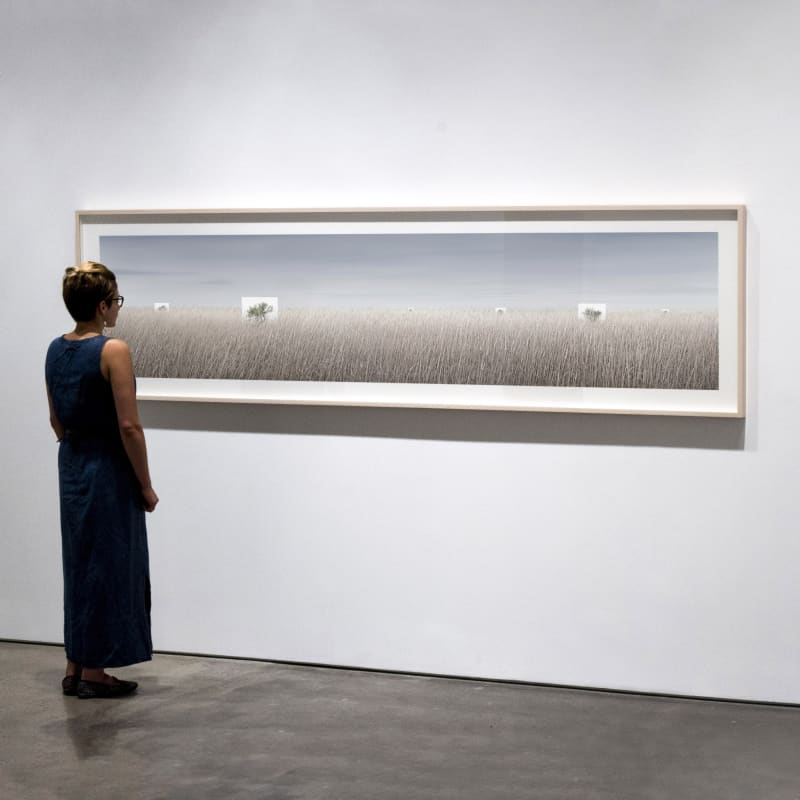JTF (just the facts): A total of 11 large scale color photographs, framed in blond wood and unmatted, and hung against white walls in the West gallery space, the smaller viewing room, and the "jewel box" area in the hallway. All of the works are archival inkjet prints, made between 2011 and 2017. While the prints come in multiple sizes, the works on view range in size from roughly 20×15 to 24×109 (or reverse), and are available in editions of 3+3AP or 6+3AP.
Comments/Context: One of the most intriguing results of watching the cycles of gallery shows come and go over a long period of time is that we can start to discern the subtle evolutions of both concept and craft that take place in an artist's work.
Back in 2009, we had our first taste of Myoung Ho Lee's isolated trees. At the time, the South Korean photographer's innovations were compellingly clear - he introduced the white backdrop isolation of studio portraiture to specimens found out in the natural landscape. With the help of crews, cranes, and strong wires (which were later digitally erased from the images to make the magic less distracting), Lee hung massive rectangular sheets of canvas behind his trees, separating their elegant forms from the surroundings and highlighting their graceful symmetries and gestures. In the process, he created images that seemed to shift back and forth, his subjects both in context and removed from that reality at the same time.
It's been nearly a decade since Lee's first exhibit at Yossi Milo Gallery, but as his new works show us, he's still exploring similar terrain, using the same general parameters - trees, landscapes, and white sheet isolation. Of course, the wonders of nature continue to produce gorgeous solitary trees worth photographing, and Lee has scouted out a few more stately evergreens with jagged branching arms and bushier varieties that seem to spread wide like languorous floating clouds, extending his taxonomy of rigorously solitary forms several steps further.
But Lee's project has proven to be compositionally richer than just a parade of perfectly centered samples, and most of his new images investigate these subtleties. Several images widen his view even further, stretching out to encompass more than one tree against the elongated horizon. In some cases, he has continued to isolate a central tree, but used smaller background forms to populate the wider space; in others, he has hung his white backdrops behind more than one specimen, creating multiple "portraits" within one often unbalanced frame. These wide views expand our perception of scale and space - like Art Sinsabaugh's flat Midwestern landscapes, Lee's panoramas feel open and airy, enhancing the idea of the tree as stubborn survivor.
Other images continue the theme and variation dance. Lee brings in the changing of the seasons with images of trees and bushes reduced to the etched forms of their leafless branches. He tilts his camera down to eliminate the sky and horizon, investigating trees nestled into seas of enveloping grass. And he patiently watches as the light shifts during the day, offering a pair of sunrise/twilight isolations, a gnarled dead trunk alternately silhouetted against warming yellow and blue and cooling pink and purple.
As the three dots in the title of this show imply, Lee's conversation with trees has continued, offering more avenues for ongoing aesthetic experimentation than we might have expected. His original isolating conceit remains powerful, and his subtle extensions to the concept have kept it fresh.

